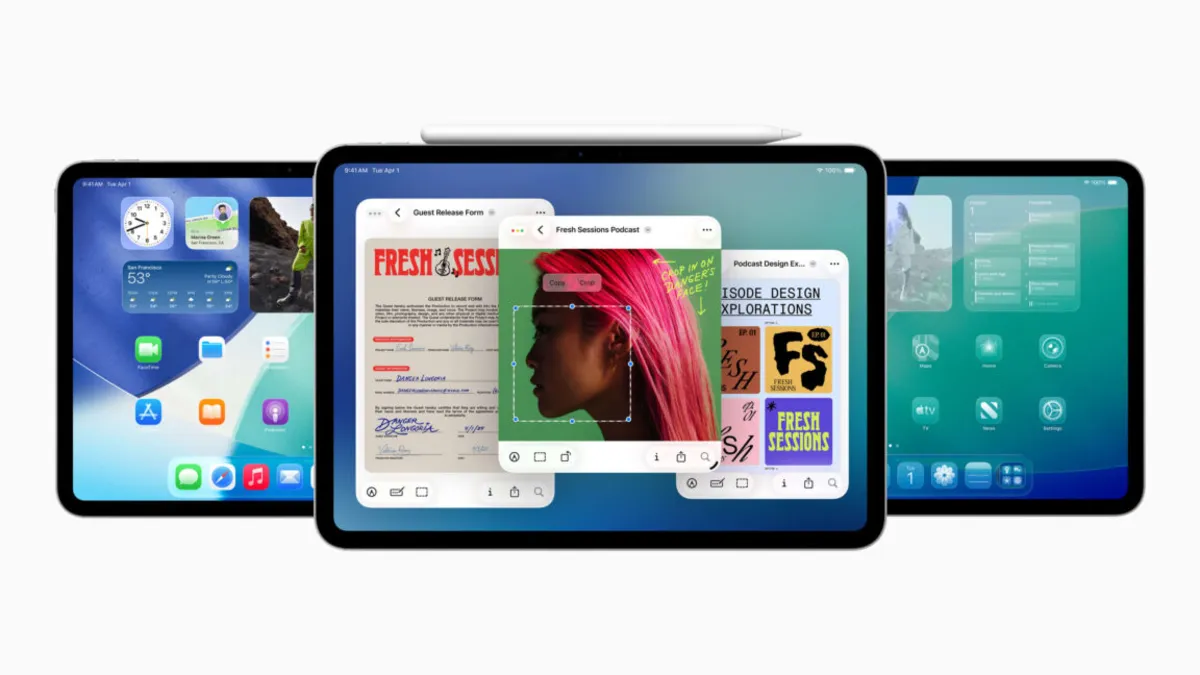
Cupertino, California — During the recent Worldwide Developers Conference, Apple’s Senior Vice President of Software Engineering, Craig Federighi, introduced the highly anticipated multitasking user interface in iPadOS 26. With a touch of sarcasm reminiscent of his previous presentations, Federighi humorously remarked on the introduction of features like more windows, a pointier pointer, and a menu bar. This light-hearted delivery elicited laughter from the audience of developers, media representatives, and Apple employees gathered at the Apple Park campus. The keynote, primarily pre-recorded and displayed on a massive outdoor screen, was an opportunity for Apple to showcase its advancements in multitasking.
For years, developers and pro users have expressed their desire for the iPad to operate more like a traditional computer. Previous iterations of iPad multitasking, notably the Stage Manager feature, received mixed reviews due to its limited functionality. However, Apple has finally heeded the call, delivering a Mac-like multitasking experience complete with an improved file manager and enhanced support for background tasks. This raises an important question: why did it take Apple so long to implement these features?
When the first iPads launched 15 years ago, they fell short of the expectations set by modern PCs and Macs. Early models lacked robust multi-window multitasking capabilities and the ability for third-party applications to share data. Federighi explained that the initial iPads were essentially enhanced iPhones with limited RAM and storage, necessitating a simplified operating system that could only handle one app at a time. The introduction of Split View and Slide Over in iOS 9 represented initial steps toward multi-window functionality, but the iPad's touch-first design required a different approach to user interaction.
As the iPad evolved, particularly with the launch of the iPad Pro line in the late 2010s, Apple significantly boosted the processing power, RAM, and storage capabilities of its tablets. The introduction of accessories like keyboards and styluses shifted the iPad's role from merely a content consumption device to a more versatile computing platform. Federighi stated, “Over time, the iPad's gotten more powerful… and so the stars kind of aligned” allowing for traditional Mac functionalities to be incorporated into the iPad.
Apple's initial attempt at a windowed multitasking system with Stage Manager in iPadOS 16 faced challenges, including compatibility issues across various iPad models. Federighi clarified that the primary goal of the new multitasking model in iPadOS 26 was to create a consistent experience that supports up to eight apps simultaneously—four on the internal display and four on an external monitor. This ambitious approach aims to provide a seamless multitasking experience for all users, irrespective of their iPad model. While Stage Manager is still available, it now serves as an optional mode rather than the primary multitasking interface.
Despite the significant strides toward a Mac-like interface, Apple remains committed to preserving the unique identity of the iPad. Federighi noted that while some design elements may converge, the company will continue to treat the iPad and Mac as distinct products with different priorities. For instance, while the new multitasking capabilities allow for background tasks, there are still limitations on the types of workloads that can run concurrently. The features showcased during the keynote were primarily tested on high-end iPad models, leaving questions about their performance on older or less powerful devices.
With the launch of iPadOS 26, Apple appears to have settled on a promising design that enhances the iPad's capabilities without sacrificing its user-friendly simplicity. Whether users are professionals seeking advanced multitasking features or casual viewers wanting a large screen for entertainment, the latest update offers something for everyone. As Apple continues to refine its approach, the iPad's evolution towards becoming a more powerful computing device seems set to continue.